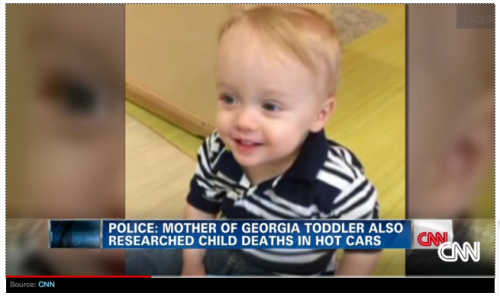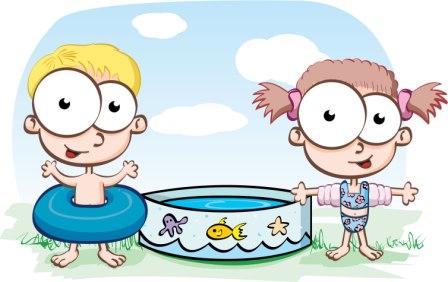Tags
az, britax child safety inc, britax child safety roundabout car seat, california child safety seat law, car child safety, cares child safety flying, child abuse, child neglect, child safety, child safety act, child safety against abduction, child safety baby, child safety deck, child safety door, child safety electrical outlets, child safety fence, child safety furniture straps, child safety hotel room child safety equipment, child safety laws, child safety leash, child safety locks for windows, child safety month, child safety officer, child safety oven latch, child safety pads pole, child safety pool, child safety pool fence, child safety products, child safety proofing, child safety protection, child safety rails, child safety restraint, child safety restraint laws, child safety seat car, child safety seat guidelines, child safety seat laws in kansas, child safety seat manufacturers, child safety seat parts, child safety seat recall list, child safety seats, child safety seats laws, child safety seats recommendations, child safety standards, child safety tips, child safety tucson, child safety volunteer tucson, child safety when driving, child safety zone law in texas, children, chop 75% of child safety seats not installed properly, christmas tree child safety gate, community partners for child safety indiana, consumer reports child safety seats, cr2450 where used child safety, cub scout handbook child safety section, department of child safety, faa approved child safety seat, fireplace child safety, florida child safety seat law, gates child safety, georgia child safety seat law, graco child safety seats, harness child safety, hawaii child safety in front seat, home child safety, home child safety products, home depot child safety locks, how long are child safety seats good for?, ia child safety seats laws, install child safety seat in chevy hhr, internet child safety, internet child safety free software, internet child safety software apple, internet explorer child safety, kids, kids left in car, ky child safety laws, lock child safety, minnesota child safety restraint law, national child safety, national child safety council minnesota, national child safety council winona minnesota, national child safety foundation, nc child safety seat law, new child safety seat recall cnn, online child safety, online child safety issues, pa laws child safety seats, parents, plastic bag child safety warning, proactive child safety, refrigerator child safety locks, risks for child safety on the internet, single parents, small child safety suggestions, smeg oven child safety, south carolina child safety info, stove guard child safety, texas child safety seat law, top ten child safety issues, tv guard child safety, us government child safety seat, utah child safety seat, virginia child safety seat law, who can inspect child safety seats, window child safety, wisconsin child safety restraint law
 Stories on the media are prevalent regarding recent cases on child neglect and endangerment. It is an huge concern to the general public, families, and friends of those involved. Jury panelists are confused on whether or not parents should be held accountable for the unintentional results of a child being jeopardized, including the case of the unfortunate death of 22-month-old toddler, Cooper Harris.
Stories on the media are prevalent regarding recent cases on child neglect and endangerment. It is an huge concern to the general public, families, and friends of those involved. Jury panelists are confused on whether or not parents should be held accountable for the unintentional results of a child being jeopardized, including the case of the unfortunate death of 22-month-old toddler, Cooper Harris.
You’ve seen recent headlines about children being left alone in vehicles with temperatures reaching well over 100 degrees. In a recent media blitz, cases are being discovered all over the United States. According to the national nonprofit organization, KidsAndCars.org, at least 44 children died in 2013 from heatstroke caused by being left in vehicles in the United States. Although it hasn’t become an epidemic, child safety should be prioritized and practiced at all times.
Here are 5 Tips in Keeping Your Child Safe This Summer
1. Never Leave A Child Alone In A Vehicle
Let’s say you drove a brand new Ford off of its lot. It is mid-day and the temperature is above 90 degrees Fahrenheit. You expected the air conditioning unit to work and decided to leave your 18-month-old child in the car for a quick coffee stop. Now let’s suppose that during your coffee stop an armed robbery occurs. You are held hostage at gunpoint, and your 18-month-old child is left inside the vehicle as temperatures continue to rise. Your engine stalls, and hours have passed. You are still held hostage while the FBI’s Crisis Negotiation Unit determines a path in deescalating the occurrence. Your child has now died. Although this is an extreme dramatized example, it can certainly happen. When you become a parent, children should always be your first priority. They tag along everywhere you go unless you assign a close relative the responsibility for taking care of your child during a specific time. They should never be left unattended, especially in a vehicle when temperatures are a major risk.
2. Ensure That Your Child Is Hydrated Throughout The Day
 You take your youngsters everywhere you go. That’s great! But are you ensuring that they keep hydrated throughout the day? According to Orthoinfo, children adjust to heat slower than adults, because their bodies are less effective at regulating body heat. Therefore, we cannot assume that our children are always hydrated. Keep a few bottles of juice and water readily available and ensure that you communicate with your adolescents to keep them replenished.
You take your youngsters everywhere you go. That’s great! But are you ensuring that they keep hydrated throughout the day? According to Orthoinfo, children adjust to heat slower than adults, because their bodies are less effective at regulating body heat. Therefore, we cannot assume that our children are always hydrated. Keep a few bottles of juice and water readily available and ensure that you communicate with your adolescents to keep them replenished.
3. Communicate
Having children who don’t clearly express when they would like something to drink is a deterrent to finding whether or not they’re hydrated. Ask your child if he or she would like water, juice, ice cream, or cold milk during a hot day. If they are too young to speak, Parents.com offers insight on knowing the signs. Besides the risk of dehydrated children, guaranteeing communication with your child allows them to begin to articulate when things aren’t going well. For example, during the summer children enjoy going to public parks, beaches, among a variety of other attractions. Through this, they spend their time running, jumping in pools, and ultimately getting hurt. If you encourage communication, little Charlie can explain what hurts him to the best of his ability.
4. Protect Your Child From The Sun
 From 1999-2003, according to the Centers for Disease Control and Prevention (CDC), a total number of 3,442 deaths resulting from exposure to extreme heat were reported. Out of this number, 228 deaths were of children under the age of fifteen. One or more blistering sunburns in children can double their chances of developing melanoma later in life. Sunscreen application is the recommended solution. Regular daily use of an SPF 15 or higher sunscreen reduces the risk of developing squamous cell carcinoma by 40 percent and the risk of developing melanoma by 50 percent. Parents.com recommends the 9 Best Sunscreens for Kids.
From 1999-2003, according to the Centers for Disease Control and Prevention (CDC), a total number of 3,442 deaths resulting from exposure to extreme heat were reported. Out of this number, 228 deaths were of children under the age of fifteen. One or more blistering sunburns in children can double their chances of developing melanoma later in life. Sunscreen application is the recommended solution. Regular daily use of an SPF 15 or higher sunscreen reduces the risk of developing squamous cell carcinoma by 40 percent and the risk of developing melanoma by 50 percent. Parents.com recommends the 9 Best Sunscreens for Kids.
5. Safety While Swimming
 According to the CDC, about one in five drowning-related deaths are of children 14 years of age and younger. For every child who dies from drowning, another five receive emergency department care for nonfatal submersion injuries. Children ages 1-4 have the highest drowning rates. Among those children, most incidents occur at residential swimming pools. In order to prevent children from drowning, it is best if you supervise your child when they are in and around water. Let’s suppose that an incident occurs at the beach. Here, it is suggested that you learn to swim and learn how to properly conduct cardiopulmonary resuscitation (CPR). For more tips on staying safe in the water visit CDC.gov.
According to the CDC, about one in five drowning-related deaths are of children 14 years of age and younger. For every child who dies from drowning, another five receive emergency department care for nonfatal submersion injuries. Children ages 1-4 have the highest drowning rates. Among those children, most incidents occur at residential swimming pools. In order to prevent children from drowning, it is best if you supervise your child when they are in and around water. Let’s suppose that an incident occurs at the beach. Here, it is suggested that you learn to swim and learn how to properly conduct cardiopulmonary resuscitation (CPR). For more tips on staying safe in the water visit CDC.gov.
I hope that you’ve enjoyed reading this post. Please share, and make the public aware that losing a child over incompetence is a lifelong tragedy.
Tiny URL for this post:
